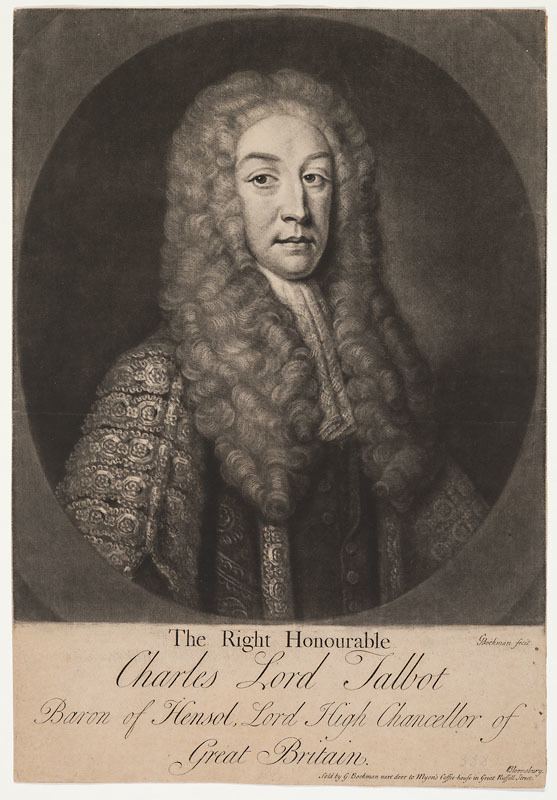 | ||
Earl Talbot is a title that has been created twice in the Peerage of Great Britain. This branch of the Talbot family descends from the Hon. Sir Gilbert Talbot (died 1518), third son of John Talbot, 2nd Earl of Shrewsbury. His great-great-great-grandson the Right Reverend William Talbot was Bishop of Oxford, of Salisbury and of Durham. His eldest son Charles Talbot was a prominent lawyer and politician. In 1733 he was raised to the Peerage of Great Britain as Lord Talbot, Baron of Hensol, in the County of Glamorgan, and then served as Lord Chancellor of Great Britain from 1733 to 1737. He was succeeded by his eldest son, the second Baron. He served as Lord Steward of the Household from 1761 to 1782. In 1761 he was created Earl Talbot and in 1780 Baron Dynevor, of Dynevor in the County of Carmarthen, in the Peerage of Great Britain. The earldom was created with normal remainder to the heirs male of his body while the barony was created with remainder to his daughter Cecil, wife of George Rice, and her issue male.
Contents
On his death in 1782 the earldom became extinct while he was succeeded in the barony of Dynevor according to the special remainder by his daughter Cecil (see the Baron Dynevor for later history of this branch of the family). The barony of Talbot was passed on to his nephew John, the third Baron. He was the son of the Hon. John Talbot (d. 1756), younger son of the first Baron, and his wife the Hon. Catherine Chetwynde, daughter of John Chetwynde, 2nd Viscount Chetwynde. He represented Castle Rising in the House of Commons. In 1784 the earldom was revived when he was made Viscount of Ingestre, in the County of Stafford, and Earl Talbot, of Hensol in the County of Glamorgan. Both titles were in the Peerage of Great Britain. Lord Talbot assumed by Royal licence the surname and arms of Chetwynd in 1786.
On his death the titles passed to his son, the second Earl. He served under the Earl of Liverpool as Lord Lieutenant of Ireland from 1817 to 1821. He was succeeded by his second but eldest surviving son, the third Earl. In 1856, on the death of his distant relative Bertram Arthur Talbot, 17th Earl of Shrewsbury and 17th Earl of Waterford, he succeeded as eighteenth Earl of Shrewsbury and eighteenth Earl of Waterford. For more information on him and for further history of the peerages, see the Earl of Shrewsbury.
Several members of junior branches of the family have also gained distinction:
Barons Talbot (1733)
Earls Talbot (1761)
Barons Talbot (1733; Reverted)
Earls Talbot (1784)
See Earl of Shrewsbury for further Earls Talbot
